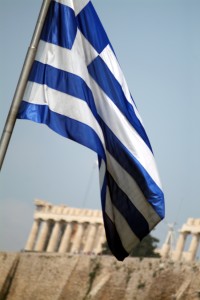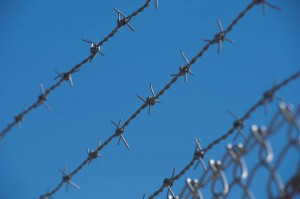On a Wednesday in March, it was already around midnight, I was sitting in an Egyptian-run tea shop in Istanbul Kumkapi chatting to some Somalis when a fifth man joined our group. It soon turned out that he had just arrived from Athens. He was older, probably in his 40, with a face full of scars that signalled a troubled, apparently partially dangerous life. He described how he had crossed the border between Greece and Turkey clandestinely, though in the ‘atypical direction’, West to East.
 First, he got lost and accidentally entered Bulgaria, there he was apprehended and sent back but told where to get to Turkey. This he did, as he explained, by swimming across a river. He explained the difficulties he had during four years of living in Athens, ‘no house, no food’, ‘you are illegal, you don’t have documents’ and that ‘there is a party, they say they don’t like foreigners, they come from behind and beat you’. This account illustrates that the combined effect of the economic crisis, legal and social exclusion and politically motivated racial violence pushes migrants including those that are in need of international protection out of the country.
First, he got lost and accidentally entered Bulgaria, there he was apprehended and sent back but told where to get to Turkey. This he did, as he explained, by swimming across a river. He explained the difficulties he had during four years of living in Athens, ‘no house, no food’, ‘you are illegal, you don’t have documents’ and that ‘there is a party, they say they don’t like foreigners, they come from behind and beat you’. This account illustrates that the combined effect of the economic crisis, legal and social exclusion and politically motivated racial violence pushes migrants including those that are in need of international protection out of the country.
Flows and counter-flows between Greece and Turkey
Rumours amongst migrant communities and NGOs in Greece and Turkey hint that more and more migrants who once made it to Greece clandestinely can no longer bear the hardship there and therefore return to Turkey. This implies that a small counter flow of migrants moving irregularly from Greece to Turkey is emerging, sometimes probably risking their lives another time by crossing the river Evros again as the above account suggests.
It remains an open question whether and how many stay in Istanbul and integrate into the depths of Istanbul’s shadow economy, how many apply to UNHCR for asylum and hope to be legally resettled to a safe country in Europe or America and how many try to continue going somewhere else or return home.
Many more, however, still try and move in the ‘typical’ direction, East to West. For instance, one morning, I saw some sub-Saharan Africans who had probably just crossed the border walking south along Road 51 near Soufli. And at the train station of Alexandropolis I could at two different occasions observe groups of 30-40 migrants who were just released from police custody - normally issued with a document that requests them to leave the country on their own account - and made their way to Athens by the afternoon train. Larger groups were French speaking, presumably from Algeria, others were from Congo, Sudan, the Middle East and probably South Asia. One group of Congolese explained ‘we went by Air Maroc to Morocco, to Casablanca, and from Casablanca we went to Istanbul with Turkish Airlines. It took only one day, Congo-Casablanca, Casablanca-Istanbul. In Istanbul we stayed for about 20 days and then we came here’. Medicine sans Frontiere said they have prepared themselves to numbers rising to over 200 per day in spring and summer, just like in 2011.
Strict controls
 My observations also revealed a complex infrastructure of migration control. There is the actual border, a 12,5 kilometre long land border and a 190 kilometre long river border. Since the times of Greek-Turkish hostility the border zone, notably on the Greek side, is highly militarised and the actual border land, a few hundred meters wide, is restricted to enter, except for local farmers. I was nevertheless taken on a tour by one of them. I could see the barbed-wired mine fields; it is said that these are anti-tank not anti-personnel mines but locals remain sceptical. There is also a huge new ditch, again claimed to be a barrier against enemy tanks. Along the border, there are watch towers on both sides, sometimes only meters apart. Paths on both sides run along the border to facilitate patrols. In addition, Greece is currently constructing a 12-kilometre fence on its short land border with Turkey. Finally, there are (only) two border crossing points, a small one in the north, Kastanies/Pazarkule and a larger one in the south, Kipoi/Ipsala.
My observations also revealed a complex infrastructure of migration control. There is the actual border, a 12,5 kilometre long land border and a 190 kilometre long river border. Since the times of Greek-Turkish hostility the border zone, notably on the Greek side, is highly militarised and the actual border land, a few hundred meters wide, is restricted to enter, except for local farmers. I was nevertheless taken on a tour by one of them. I could see the barbed-wired mine fields; it is said that these are anti-tank not anti-personnel mines but locals remain sceptical. There is also a huge new ditch, again claimed to be a barrier against enemy tanks. Along the border, there are watch towers on both sides, sometimes only meters apart. Paths on both sides run along the border to facilitate patrols. In addition, Greece is currently constructing a 12-kilometre fence on its short land border with Turkey. Finally, there are (only) two border crossing points, a small one in the north, Kastanies/Pazarkule and a larger one in the south, Kipoi/Ipsala.
The control of the Greek border is principally the responsibility of the police, its headquarter for South Evros is in Alexandropolis where also the coast guard is based. But also the army secures the border, though against perceived military threats; the military is indeed omnipresent in the region. Finally, the EU’s border protection agency Frontex has units in the region, in Orestiada and Poros (Frontex 2012). Army and police are officially operate separatedly, though I was told that de facto detainees are transported in army vans.
The police and Frontex instead collaborate and (partly) from the same premises. Along the border zone there are three border police stations, Feres, Tychero and Soufli in the southern district, each with some small detention facility, and one large detention centre in Filakio in the northern district. Surprisingly, at the time of my trip all seemed to be closed, closed for renovation with EU-money as large boards explained. There is a new screening centre in Poros, a small village just east of Feres and finally another detention centre in Vena west of Evros. Otherwise, there are two hotels in Orestiada where Frontex officers are based plus one gym which the officers frequent. It is said there is also one brothel on the outskirts of Orestiada used by the Frontex officers.
On the Turkish side there is the military and specifically the Jendarma, a military unit that are responsible for controlling the national borders. There is also a new detention centre on the outskirts of Edirne build under an EU-funded UK-Turkey twinning project (see previous blog), which is still partly under construction. Shortly after my visit the authorities conducted a series of raids in the Ipsala and Meric regions on the border with Greece and arrested around 110 migrants and refugees (Radikal 2012). This not only suggests that the police is actually aware of the whereabouts of irregular immigrants and their facilitators. Even more importantly it could imply, as Ankara sources suggest to me, that Turkish authorities are changing their view on transit migration and are no longer willing to tolerate that the country is used by migrants and refugees as a transit zone. It is also rumoured that after some hesitation the government is now ready to finally sign the readmission agreement with the EU. This would mean that irregular immigrants found in the EU who were entering from Turkey and who do not apply for asylum could be returned to Turkey.
Intensified controls on the Greek side, notably the Frontex operations have already shifted the flow from North to South Evros, and thus from the land to the river border. Whilst locals in the North still want the fence, mainly to protect their crops and to be free of fear when working at night, as they say, they also admit that it is no longer really necessary. If Turkey is now going to enhance control of its borders the main current route for clandestine migration to the EU would be blocked. One consequence could be that more people, notably refugees, will seek asylum in Turkey; this could become yet another challenge for the country. Another consequence could be that people, and the smugglers who facilitate their journeys, move to other routes and ports of departure (like Bulgaria, Aegean again, Libya again, the Balkans and so on). Routes could subsequently become more diverse and dispersed again and thus more difficult to control. What and were this will happen remains to be seen.
Reference
This report is mostly based on interviews I conducted in course of a brief research trip to Turkey and Greece in mid March with migrants in Istanbul/Turkey and Alexandropolis/Greece, and the police, International Organisations, NGOs and local farmers in Greece/Thrace plus observations made in the border region. The Greek part I conducted jointly with Despina Syrri from Thessaloniki.
(2) See http://www.radikal.com.tr/Radikal.aspx?aType=RadikalDetayV3&ArticleID=1085111&CategoryID=77